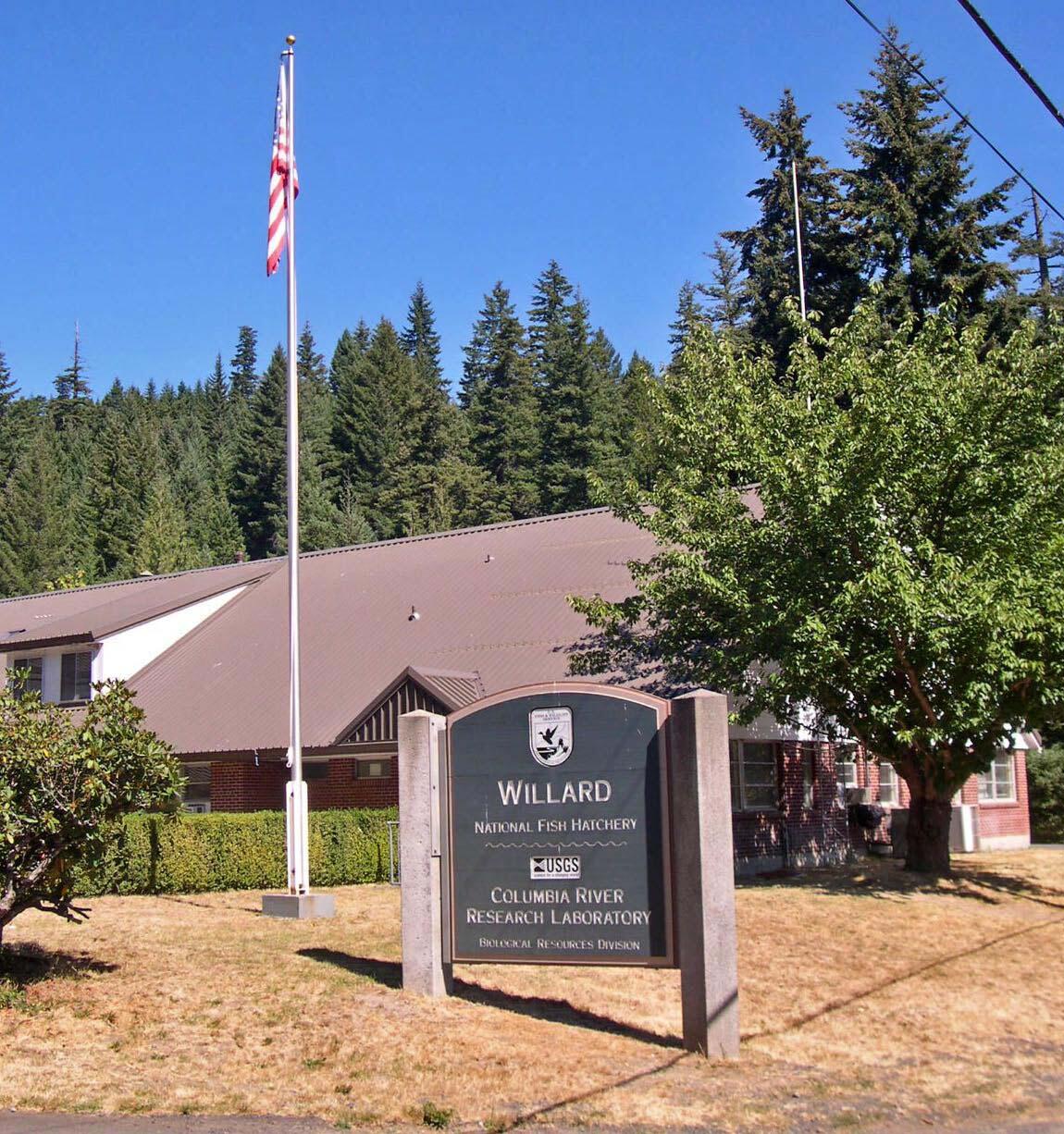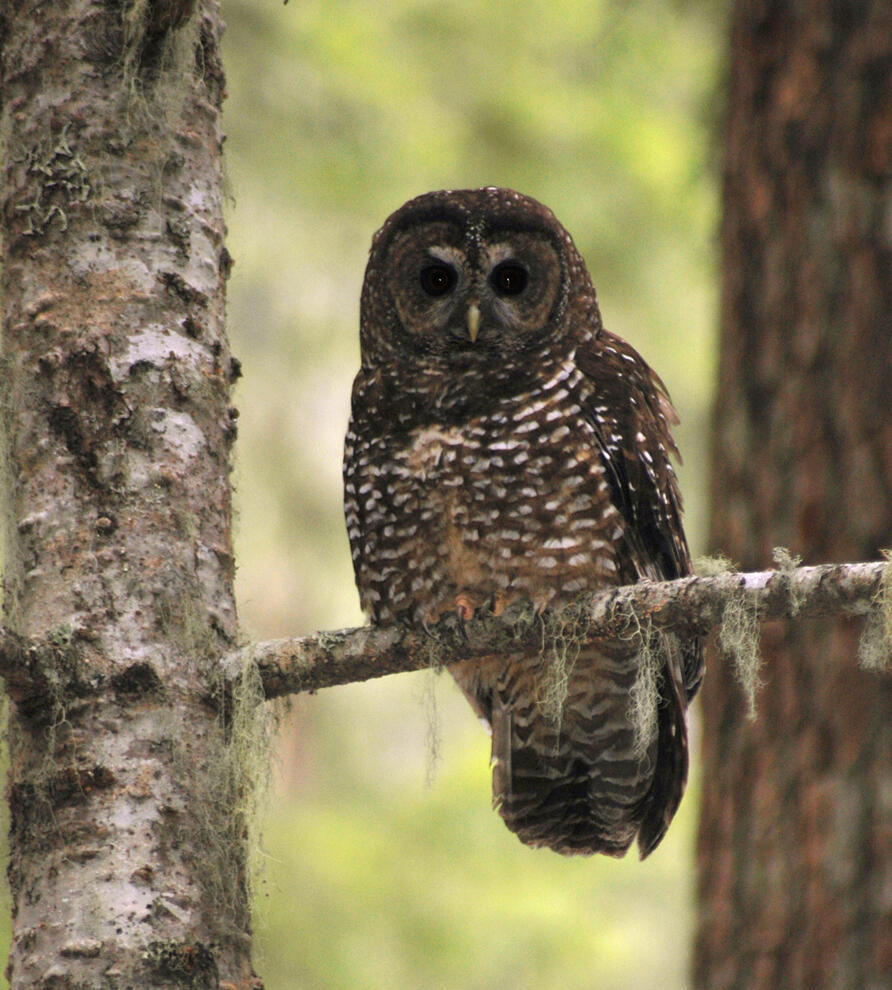Ecology of Columbia River Gorge National Scenic Area
From the dense temperate rainforests of the western Gorge to the arid pine-oak woodlands and grassy savannahs of the eastern Gorge, the ecosystems within the national scenic area vary greatly from west to east, primarily due to the amount of annual precipitation in different areas.
The Columbia River Gorge has a unique set of protections that preserve its scenic, natural, cultural, and recreational resources. The designation of the Gorge took place on November 17, 1986, when the Columbia River Gorge National Scenic Area Act was signed into law.

The USGS Western Fisheries Research Center (WFRC) has worked with Federal and state agencies, universities, tribal governments, and non-government organizations partners for over 50 years to provide data to aquatic resource managers. Columbia River fish are deeply rooted in the area’s Tribal history. Salmon have served as a significant food source and are instrumental in the traditions and culture of the Pacific Northwest. The water flow of the Columbia River has changed over time in response to the construction of hydroelectric dams on the river, the growth of commercial fisheries, railroads, canals, and highways. Before dam construction, the waterfall in the Celilo Falls, located on the mid-Columbia River, was a part of a nine-mile-long Indigenous fishery and a meeting place and prominent trade village for tribes and seasonal visitors. Celilo Falls was flooded due to dam construction.
The abundant fish populations that once sustained those living in the Columbia River Gorge have decreased over time. Dams provide a reliable source of power but also create physical barriers to fish migration. As existing dams age, engineers and fish biologists are working together to improve passage for migratory fish and decrease the negative effects of dams on aquatic ecosystems. USGS researchers conduct studies on the reintroduction of the fish species that have been affected by dams, such as salmon and steelhead. Research at the WFRC focuses on the environmental factors responsible for the creation, maintenance, and regulation of fish populations including their interactions in aquatic communities and ecosystems.
Additionally, the United States Forest Service partners closely with the Columbia River Gorge Commission to develop management plans that require coordination with the six counties and tribal leaders. Within the Columbia River Gorge, the USGS Nonindigenous Aquatic Species (NAS) Program monitors, analyzes, and records sightings of introduced aquatic species in and the Columbia River Gorge and in wetlands, lakes, rivers, estuaries, and coastlines throughout the United States. This database provides documentation of species occurrence and is used to determine the patterns, pathways, and potential colonization of species.

Animals
The Columbia River Gorge has unique ecosystems with rich biodiversity. The Gorge has approximately 44 species of fish and more than 200 species of birds. There are currently no endangered species within the boundaries of the scenic area, and the Northern Spotted Owl is the only threatened species. Mammal species include, deer, bobcat, beaver, yellow-bellied marmot, black bear, California ground squirrel, along with amphibians and reptiles such as the Pacific tree frog and garter snake are common inhabitants.
Fish
Many fish species can be found in the Columbia River, and salmon are well-known inhabitants.
Chinook salmon are the largest of the Columbia River salmon. Adults average 22 pounds and 40 to 50-pound adults have been reported in the fish ladders at Bonneville Dam. Chinook salmon spawn in the late summer and early fall. Juveniles may stay in the river for up to 18 months before starting their migration toward the ocean. After spending two to five years in the ocean, they migrate up the Columbia River to the place they were born. There, the Chinook salmon spawn and die, completing their life cycle. The highest volume of salmon can be seen in the fish ladders of the Columbia River dams between about April and November.

Adult Columbia River Coho salmon average six to twelve pounds. Juveniles spend about one year in the stream where they were born, then migrate to the ocean in the spring. Adults generally spend one to two years in the ocean before returning to spawn in the stream where they were born. After spawning, Coho salmon die, completing their life cycle. The Coho salmon pass through the fish ladders of the Columbia River dams between August and November.

Sockeye salmon are unique when compared to other salmon in the Pacific Northwest because they travel from their spawning grounds in streams to lakes before heading to the ocean. After spending one to two years in a lake they migrate to the ocean, then return to the same stream where they were born. Sockeye salmon can be found in the lower Columbia River in July.

The Pacific lamprey has been an important fish in the Columbia River for centuries. Lampreys look so much like eels that they are often called “lamprey eels.” They have three teeth and swim in a snake-like motion. They are known for resting on rocks while attached by their suction-cup-shaped mouths. Lampreys are born in freshwater, grow to maturity in the ocean, and return to freshwater to reproduce. Lampreys are an important part of the food web and can be seen in the fish ladders of the lower Columbia River dams from June to August.

The white sturgeon is commonly found above and below Bonneville Dam as well as throughout the Columbia and Snake Rivers. They thrive in deep, cavernous areas and are bottom feeders. Sturgeons are rarely seen in the fish ladders at Bonneville Dam but are often caught by anglers just below the dam and can be found below Bonneville Dam year-round.

American shad were introduced to the Sacramento River in California in 1871 and are now found in rivers all along the Pacific Coast, including the Columbia River. Juveniles spend the summer in fresh water and migrate to the ocean in the fall. Adult shads are an average of 16 inches in length and weight two to six pounds. Adults spend three to five years in the ocean and most return to the Columbia River to spawn. Not all shad die after spawning and some may return up to five times in their life. Shad can be seen in the fish ladders of the lower Columbia River dams May through August. Estimates of one to six million adults are counted per year at Bonneville Dam.

Birds
The Peregrine falcon was listed as endangered in Washington in 1970. In 1980, only five pairs could be found nesting in the entire state. From 1982-1997, 145 young peregrines were released in suitable habitats, including the Columbia River Gorge. Peregrine falcons can be found today in the western Gorge at the cliffs of Cape Horn in Washington and can fly at speeds up to 200 mph when in pursuit of prey. To ensure species protection and to limit the disruption of their nesting sites, a seasonal closure takes place along the Cape Horn trail. There is currently at least one pair that maintains a permanent home on the steep basalt cliffs of Cape Horn.
The Columbia River Gorge supports a population of resident bald eagles near Bonneville Dam which can be spotted in and near trees along the river as they search for fish to hunt. Migrating bald eagles from the north make the journey down the Columbia River Gorge from December to March.

Amphibians and Reptiles
Many different species of salamanders, newts, and lizards are found in the Columbia River Gorge. Salamanders are generally nocturnal and spend much of their time hiding under wood or rocks. The Larch Mountain salamander is a woodland salamander, living in the forested environment that provides cool, moist conditions. This species is endemic to the Columbia River Gorge, meaning that it is native to this area and found nowhere else in the world.
The U.S. Geological Survey Amphibian Research and Monitoring Initiative (ARMI) conducts essential research to help resource managers reverse amphibian population declines. Amphibians, including salamanders, are critical parts of the ecosystem as both predators and prey. They eat insect pests which benefits agriculture and controls mosquito populations. Their moist, permeable skin causes amphibians to be vulnerable to drought and toxic substances, making them an excellent indicator of ecosystem health. Due to the proportion of species considered endangered or vulnerable, amphibians are considered to be at a greater risk than fish, reptiles, birds, or mammals. The disease Bsal fungus, has caused mass die-offs of salamanders in Europe and poses a serious threat to the populations in the United States. Scientists are closely monitoring the spread of this disease as they predict its introduction in the United States would prove fatal to the salamander populations. The risk of Bsal is highest in the Pacific coast, southern Appalachian Mountains, and mid-Atlantic regions. The USGS NAS database is one resource that is used to document species and create risk assessments of salamander populations across the United States.
Lizards
Numerous lizard species live in the dynamic environment of the Columbia River Gorge. Two species of lizards commonly found in the Columbia River Gorge include the northern alligator lizard and the western fence lizard. The Northern Alligator Lizard is found in the western Gorge and favors wet environments. In contrast, the Western Fence Lizard is found in the eastern Gorge and favors dry environments.
Plants
Rainfall and elevation are two main factors that influence where in the Columbia River Gorge specific plants are found. The temperate rainforest conditions in the western Gorge change dramatically in a short distance when compared to the desert conditions of the east. The tallest ridgelines in the central Columbia River Gorge exceed 4,000 feet above sea level. These natural variables, rainfall, temperature, sunlight, shade, and elevation create what ecologists call microclimates, small regions of unique conditions that encourage the growth of a species. These microclimates influence the growth of plants in the variable geographic locations.
Wildflowers
Blooming wildflowers in the spring bring plenty of tourists and locals alike to hike the Gorge to view a wide array of bursting colors. Over 800 species of wildflowers can be found in the Columbia River Gorge Natural Scenic Area and 15 of them are endemic, meaning they are not found anywhere else in the world, including: Barrett's penstemon, Columbia desert parsley, Columbia Gorge broad-leaf lupine, Columbia Gorge daisy, Columbia kittentail, Hood River milk vetch, Howell's daisy, long-beard hawkweed, Northern wormwood, Oregon sullivantia, Poet's shooting star, smooth desert parsley, Smooth-Leaf Douglasia, Suksdorf's desert parsley, and the Dalles mountain buttercup.

Ecosystem Types
Oak pine woodlands contains perhaps the most varied vegetation in the Columbia River Gorge. This ecosystem can be found throughout the Columbia River Gorge and Columbia Plateau region. In drier areas, the ecosystem is dominated by Oregon white oak and grasslands, and in wetter areas, the ecosystem is dominated by Ponderosa pine. Plant life under the tree canopy was historically native grasses, shrubs, and wildflowers, but are now mostly non-native grasses, poison-oak, and ferns. Common animal species in these ecosystems include western gray squirrel, Lewis woodpecker, California mountain kingsnake, lesser goldfinch, elk, and mule deer.
Coniferous woodlands consist of Douglas fir and Western hemlock forest systems. They are known for their frequent colocation with one another and can be found alongside western red cedar. Coniferous woodlands are generally found in dry areas. Plant life under the tree canopy includes Oregon grape, rhododendron, twinflower, and sword fern.
Grassland ecosystems dominant the far eastern section of the Columbia River Gorge known as the Columbia Plateau region. Grasses and shrubs are dominant in the mostly treeless ecosystem. Introduced grass species cover most of the lands, however, the native species bitterbrush and sagebrush can also be found. Oak pine woodlands are commonly found adjacent to this ecosystem.

River bottomlands include the floodplains and riparian forests found along the Columbia River shores. In many places along the Columbia River, they exist only as small strips adjacent to highways. They contain mostly deciduous forests and marshes and are characterized as gently- sloping lands that are the remains of the original Columbia River floodplains.

